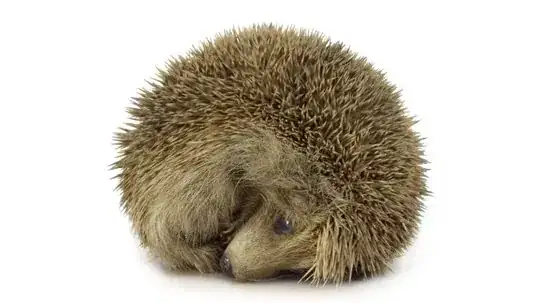Farts
As we all know, cattle and some humans can produce inflammable farts. This is because we produce considerable amount of methane and hydrogen in our intestines.
Unfortunately this is unlikely to be a working solution for birds. No extensive research has been done on birds farting but most students of birds seem to agree that they fart very little.
Mike Murray said in a 2009 article for Popular Science, birds are
capable of passing gas, but they don’t because they lack the same
combination of diet and gas-forming bacteria in their gut that gives
mammals their odorous gas.
https://www.dailydot.com/parsec/do-birds-fart/
One supposes that given a very specialised diet (of beans?) a bird species could evolve to fart a lot but it seems unlikely for birds of a size that can fly. The larger flying birds are carnivores. Small birds' farts just wouldn't be voluminous enough for much of a display.
The Uropygial (preen) gland
[The] Uropygial, or Oil, Gland, in birds, an organ located on the back
near the base of the tail. Paired or in two united halves, it is found
in most birds. Absent in ostrich, emu, cassowary, bustard, frogmouth,
and a few other birds, the oil gland is best-developed in aquatic
species, notably petrels and pelicans, and in the osprey and
oilbird. https://www.britannica.com/science/preen-gland
The very name oilbird seems promising. Let's investigate.
Nesting in colonies in caves, oilbirds are ... the only nocturnal
flying fruit-eating birds in the world. They forage at night, with
specially adapted eyesight. https://en.wikipedia.org/wiki/Oilbird
Clearly a bird that is flying at night is going to be spectacular if it bursts into flames but is their oil flammable? Yes it is.
The oilbird, or guacharo, is not a morbidly obese bird. It’s called
“the whale of the air” because like its larger, ocean-dwelling
brethren, it contained oil—oil that was harvested yearly, and which
lit lamps.
So my suggestion is that some offshoot of the oilbird started to over-produce flammable oil from its Uropygial gland. The reaction to this would be excess preening. This oil would be spread all over the bird's feathers.
So what causes them to burst into flames?
The crop
Many birds digest their food by eating small stones that are kept in the crop and act as a grinding mechanism. Let us suppose our birds live in a flint-rich area. They pick up small flints for their crop. Flints are well known to produce sparks.
The disaster
Birds that are over preening and spreading flammable oil all over themselves may occasionally get some of the oil in or near the flints in their crop. The flame ignites and of course the bird flies off in alarm screeching wildly. The flames spread backwards over the feathers increasing the conflagration.
This is most likely to kill the bird but it would explain why people occasionally see these amazing aerial bonfires at night and report them back to their sceptical friends thus creating the myth.
Alternatively these are water-birds and they instinctively dive into the nearest river or lake thus extinguishing the flames and surviving.
Evolution
Over time the birds that burst into flame and die are weeded out of the population. Some birds survive in better or worse condition.
Breeding Plumage: This is the most brilliant, colorful plumage for
many bird species, and it is displayed during the courtship season
when birds are trying to attract mates. In dimorphic species it is
most often the males that develop bold breeding plumage, and it may
involve extraordinary colors or unusual feather shapes such as long
streamers. https://www.thespruce.com/bird-plumages-387315
When males, who are in their mating plumage survive being on fire they become very attractive to the females for their survivability and toughness and so tend to have more offspring. As generations go by, the males start to 'deliberately' set fire to themselves during the mating season and (like the peacock's tail) it becomes a feature that is kept going by sexual selection rather than simple survival.
The males' mating plumage develops an outer layer of fluffy feathers that are easily set alight once preened selectively with the previously mentioned oil. This burns off leaving the lower flight feathers intact. New feathers can be grown fairly rapidly (feathers are growing and being shed all the time). Males that can both set fire to themselves and quickly regrow their mating plumage are obviously healthy individuals and so they become even more attractive to the females and we get ...
Fisherian Runaway
Fisherian runaway or runaway selection is a sexual selection mechanism
proposed by the mathematical biologist Ronald Fisher in the early 20th
century, to account for the evolution of exaggerated male
ornamentation by persistent, directional female choice.[1][2][3] An
example is the colourful and elaborate peacock plumage compared to the
relatively subdued peahen plumage; the costly ornaments, notably the
bird's extremely long tail, appear to be incompatible with natural
selection. https://en.wikipedia.org/wiki/Fisherian_runaway
Over the millennia the display becomes more and more spectacular for no other reason than the females prefer it.

Don't eat me otherwise i'll burn this forest/grassland down. Perhaps a special quill that normally lies across the other feathers that can be raised, and used to spray the combustible liquid. If the quill is damaged it can be refreshed in the next molt. So not necessarily abird of flames, butflames on a bird. – Kain0_0 Dec 31 '18 at 00:03